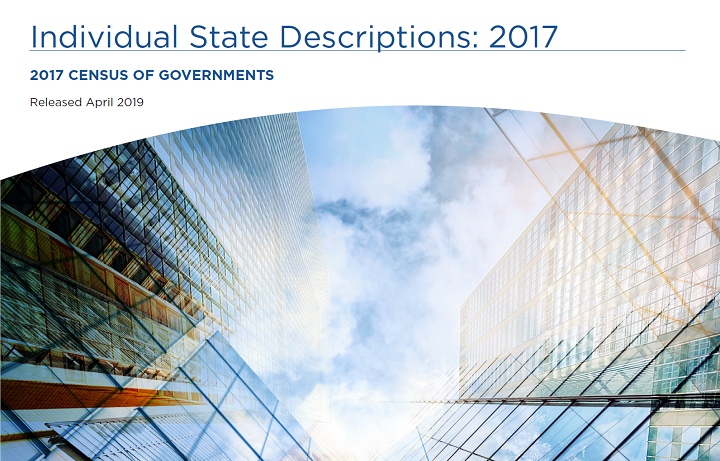
The Census of Governments occurs every 5 years, covering all active state and local government units in the U.S. The 2017 Census of Governments, similar to those taken since 1957, covers three major components – government organization, public employment, and public finances. Statistics were recently released providing data on local government counts from the 2017 Government Units Survey (GUS).
For 2017, the Census of Governments indicates that below the federal government and the 50 states (and the District of Columbia), there are 90,075 local governments in the United States, of which 38,779 general-purpose local governments and 51,296 special purpose governments.
General-purpose local governments include 3,031 county governments, as well as 35,748 sub-county general-purpose governments (which in turn include 19,495 municipal governments and 16,253 township governments). Special-purpose local governments include 12,754 independent school district governments as well as 38,542 special district governments (such as fire districts or water and sewer districts).
Detailed data regarding government organization for 2017 are now available from the Census Bureau website: https://www.census.gov/data/tables/2017/econ/gus/2017-governments.html
Naturally, different states have different local government structures. The Individual State Descriptions (2017) report provides information about the organization of state and local governments in the U.S. There is a separate summary for each state and the District of Columbia. Summaries are divided according to the five basic types of local governments.
